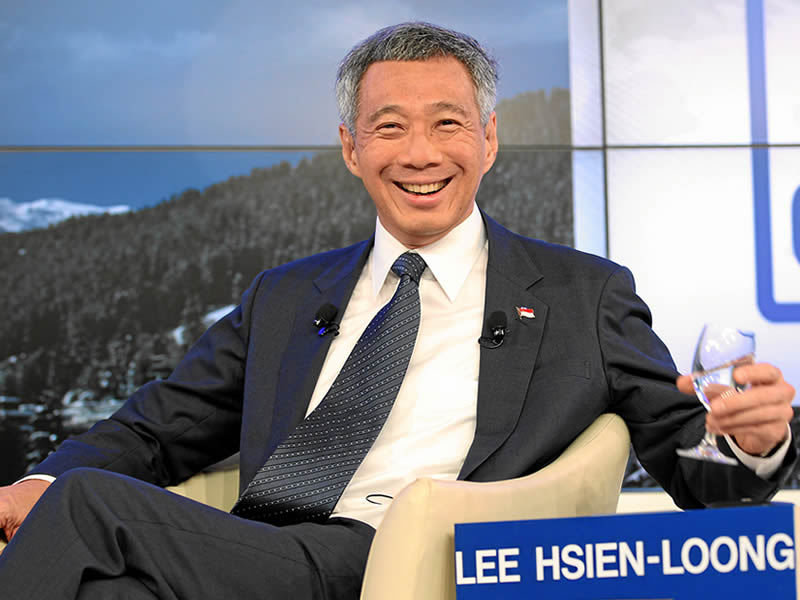In many ways the contrast between the vast resource-rich Australia and geographically tiny and resource-free Singapore could not be more stark. And yet the two countries are becoming ever more closely aligned and economically entwined.
Despite Singapore’s modest population of just five million, in the past decade it has motored past the United Kingdom, Germany and New Zealand – as well as the larger neighboring economies of Thailand and Indonesia – to become Australia’s fifth largest trading partner.
It is also Australia’s fifth largest foreign investor, a vital source of capital. Singapore is to Southeast Asia’s developing nations, what Hong Kong has been to China; the money funnel to rest of the world, and a growing financial market where companies from across the region are listing and creating derivatives and other financial instruments.

The icing on the cake is the increasing strategic alignment between Australia and Singapore that will see a permanent presence of the Singaporean armed forces, who already have significant training operations in Northern Queensland.
This blooming international romance has prompted the significant upgrade of the Singapore-Australia Free Trade Agreement into what has been called a Comprehensive Strategic Partnership.
This covers the whole gamut of relationships in trade, investment, defence, education and tourism.
To celebrate the latest step in the relationship, Singaporean Prime Minister Lee Hsien Loong gave an incredibly warm address to a joint-sitting of both houses of the Australian parliament.
“We are good friends, because fundamentally, we have similar strategic interests and perspectives,” Prime Minister Lee said in a summary that could just have easily have been delivered by Malcolm Turnbull.
“First, we are both open economies that rely heavily on international trade, on global markets,” Mr Lee said.
“We both need a stable and orderly world, in which countries big and small can prosper in peace. This requires an open and inclusive regional order, where all the major powers can participate.”
“We both see the US as a benign force, playing a major role in fostering peace and stability in Asia. At the same time, we both have substantial ties with other major powers.
“For both of us, China is our largest trading partner. We wish to strengthen our cooperation with China, and welcome China in engaging constructively in the region,” Prime Minister Lee said.
The creation of Southeast Asia’s financial and services hub from an swampy island province of Malaysia, is one of the great feats of innovation in the past century, a 20th century update of powerful European city-states like Venice, Florence and Heidelberg, that has since been copied by the gulf states in Dubai.
While Australian governments forever babble on about how marvelous our services are and how great the opportunities that exist for them in Asia, it is Singapore that is walking the walk and emerging as the financial services hub for the region.
Australia might dream of being the financial centre of gravity in our time zone, but it keeps getting rudely woken up.
Singapore is also a regional leader in health services, especially in their exports and medical tourism – an area that has been oddly untapped in Australia, despite our outstanding health system and our storied history of research and development prowess in the sector.
It’s apposite, then, that the day before Mr Lee’s address, his Australian counterpart Malcolm Turnbull fronted the Australian Minerals Industry’s Parliamentary Dinner.
“Far from diminishing demand for our mineral exports, the digital revolution has enhanced the importance of cities and the infrastructure which enables them, not to speak of driving massive growth in demand for rare earth elements and lithium – of especial importance as battery storage expands from personal devices, to vehicles, to householders, to businesses, to national grids,” Mr Turnbull said.
“I know that innovation is not easy in an already inherently risky industry. When it comes to using new technologies and techniques, everyone wants to be the first to be second.”
“Yet the profound truth is that only innovation will propel the next leap forward in productivity and performance for our world-leading mining industry.”
“From our very first day in office, my government has put innovation front and centre of our agenda. We recognise that innovation doesn’t happen in a vacuum: it happens within a culture—an entrepreneurial ecosystem— that encourages and rewards new ideas.”
While his appearance at the dinner was proof of the outsized importance our quarries still have in the economy, there was also further heartening evidence of the continuing broadening of the PMs technology and innovation narrative.
For all the differences between Australia and Singapore, it was rather spooky that in the space of a week the governments of both nations announced the restructuring of their government digital delivery programs.
For all the progress in the sector made by the Turnbull Government, Australian governments still have plenty to learn, and the restructuring of Australian industry has a long way to go.
But Prime Minister Lee was keen to develop strengthened research partnerships.
“The [Comprehensive Strategic Partnership] also covers innovation and science, Mr Lee said. “Australia has, in the Commonwealth Scientific and Industrial Research Organisation (CSIRO), a very well-developed institute for scientific research.”
“Singapore also emphasizes the importance of R&D to our economy. We have A*Star (Agency for Science, Technology and Research) to lead our efforts,” he said.
“We have identified some key challenges to tackle, including basic urban problems such as water supply and energy conservation. We have much scope to cooperate more in R&D.”
And the Singaporean defence deal will give Australia even more opportunities in defence technology.
No other relationship for Australia, at ground level, is as important as the one with Singapore, to give this vital overarching strategy of restructuring the Australian economy the not inconsiderable help it needs.
Do you know more? Contact James Riley via Email.
